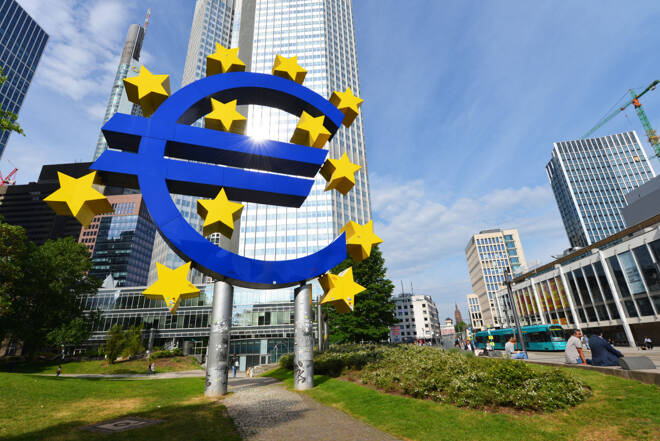Advertisement
Advertisement
Euro Zone Faced Mild Recession as Q1 GDP Declines by 0.1%
By:
Mixed Q1 2023 GDP growth in Euro area and EU; positive employment growth.
Highlights
- Q1 2023 GDP: Euro area -0.1%, EU +0.1%
- Employment growth: Euro area +0.6%, EU +0.5%
- Productivity: Decrease in Q1 2023, both in euro area and EU
Euro Area Sees Mild Q1 GDP Decline
In the first quarter of 2023, seasonally adjusted GDP in the euro area decreased by 0.1%, while the EU experienced a 0.1% increase compared to the previous quarter, according to Eurostat. This follows a decline of 0.1% in the euro area and 0.2% in the EU in the fourth quarter of 2022. The revised GDP estimate for the quarter was 0.0%.
Compared to the same quarter of the previous year, both the euro area and the EU saw a 1.0% increase in seasonally adjusted GDP in Q1 2023, following growth rates of 1.8% and 1.7% respectively in the previous quarter. Meanwhile, the United States recorded a 0.3% increase in GDP compared to the previous quarter and a 1.6% increase compared to the same quarter of the previous year.
GDP Components: Consumption Down, Investment Up
Analyzing the components of GDP, household final consumption expenditure decreased by 0.3% in both the euro area and the EU in Q1 2023, while government final consumption expenditure declined by 1.6% in the euro area and 0.9% in the EU. Gross fixed capital formation increased by 0.6% in the euro area and 0.3% in the EU. Exports decreased by 0.1% in the euro area and increased by 0.1% in the EU, while imports decreased by 1.3% in both the euro area and the EU.
Steady Employment Growth in Euro Zone
Examining employment growth, the number of employed persons increased by 0.6% in the euro area and 0.5% in the EU in Q1 2023 compared to the previous quarter. This follows an increase of 0.3% in both regions in the fourth quarter of 2022. The final employment change estimate for the quarter was 0.6%. On a year-on-year basis, employment increased by 1.6% in both the euro area and the EU in Q1 2023, following growth rates of 1.5% and 1.3% respectively in the previous quarter.
Hours worked increased by 0.6% in the euro area and 0.7% in the EU in Q1 2023 compared to the previous quarter. On a year-on-year basis, the euro area saw a 2.0% increase in hours worked, while the EU recorded a 1.9% increase.
Euro Area and EU: Post-Pandemic GDP Growth
Based on seasonally adjusted figures, GDP volumes in the euro area and EU were 2.2% and 2.9% respectively above the level recorded in the fourth quarter of 2019, before the COVID-19 outbreak. In comparison, GDP in the United States was 5.4% higher than the level of the fourth quarter of 2019.
Labor Productivity Declines in Euro Zone
The combination of GDP and employment data allows an estimation of labor productivity. In Q1 2023, productivity based on persons decreased by 0.6% in the euro area and 0.5% in the EU compared to the same quarter of the previous year. Based on hours worked, productivity compared to the same quarter of the previous year decreased by 0.9% in the euro area and 0.7% in the EU.
About the Author
James Hyerczykauthor
James Hyerczyk is a U.S. based seasoned technical analyst and educator with over 40 years of experience in market analysis and trading, specializing in chart patterns and price movement. He is the author of two books on technical analysis and has a background in both futures and stock markets.
Advertisement
